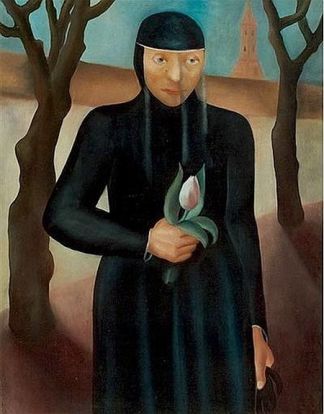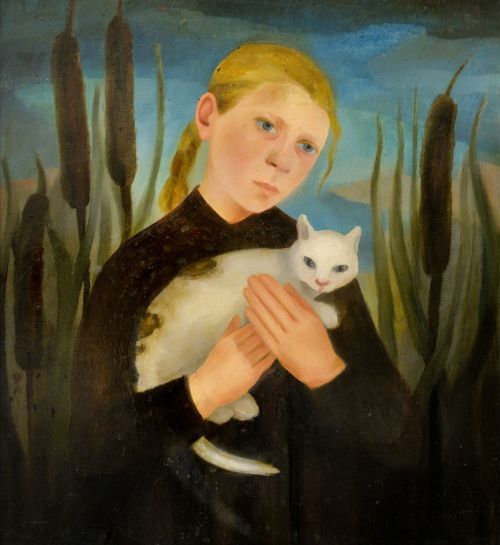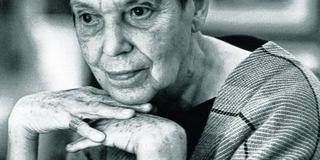Edvard Munch, The Girls On The Pier, C. 1901, Oil On Canvas, 136 X 125 Cm, National Gallery, Oslo

Edvard Munch, The Girls on the Pier, c. 1901, Oil on canvas, 136 x 125 cm, National Gallery, Oslo
More Posts from Art0634 and Others





Kate Diehn-Bitt (German, 1900-1978)
An automatic translation:“Born in Schöneberg near Berlin in 1900, Kate (originally: Käthe) Diehn-Bitt was a middle-class daughter. Her training took place exclusively in various private art schools; After early marriage and the birth of her son in 1920, she began studying at the – again – private art academy in Dresden in 1929–31, where Woldemar Winkler (1902–2004) became her teacher, who later described her as “a very clever one , very self-confident, emancipated personality”. The Dresden art scene around Otto Dix, Otto Griebel and others must have been as impressive for Diehn-Bitt as the political atmosphere in the city.
Back in Rostock, she set up her first studio in 1933; In 1935 she exhibited together with the sculptor Hertha von Guttenberg in the gallery of Wolfgang Gurlitt in Berlin - it would take until 1948 until another exhibition is dedicated to her in Schwerin.
During the Nazi era, Kate Diehn-Bitt’s stepfather, Dr. Leo Glaser persecuted as a Jew; she herself and her work were deemed “foreign”. After the end of the war, Diehn-Bitt was initially involved in cultural policy in the newly founded GDR, but after being sentenced to paint “not in a forward-looking or optimistic manner”, she withdrew from all functions in the 1950s and died in Rostock in 1978. All of the political-historical upheavals of the 20th century in Germany can be seen in her biography and work.”
https://www.kulturstiftung.de

Kurt Schwitters (German, 1887-1948), Für Tilly, 1923. Oil and turning handle on panel, 25.7 x 16 x 4.9 cm.

The Brew
2023
Noak Esbjörnsson

After Diebenkorn


Willem de Kooning,January 1st, 1956
oil on canvas

L’atelier de l’artiste by Paul Serusier.

Dematerialization Near the Nose of Nero by Salvador Dali, 1947.

Edvard Munch, Helge Rode, 1908 48.5 x 41 cm Oil on canvas

Léopold Survage (French, 1878-1968) - Le Soleil, oil on canvas, 72.9 x 92.1 cm (1938)
-
 marcospacheco liked this · 2 months ago
marcospacheco liked this · 2 months ago -
 oldartist69 liked this · 4 months ago
oldartist69 liked this · 4 months ago -
 daddyslittlegirlofsammy reblogged this · 5 months ago
daddyslittlegirlofsammy reblogged this · 5 months ago -
 qg3 reblogged this · 7 months ago
qg3 reblogged this · 7 months ago -
 raevyne1-blog liked this · 9 months ago
raevyne1-blog liked this · 9 months ago -
 the-venus-sandpiper liked this · 9 months ago
the-venus-sandpiper liked this · 9 months ago -
 spycopoth liked this · 9 months ago
spycopoth liked this · 9 months ago -
 dykewilde liked this · 10 months ago
dykewilde liked this · 10 months ago -
 whiteground liked this · 10 months ago
whiteground liked this · 10 months ago -
 pachucocholosychundos reblogged this · 10 months ago
pachucocholosychundos reblogged this · 10 months ago -
 pachucocholosychundos liked this · 10 months ago
pachucocholosychundos liked this · 10 months ago -
 slothgirl6 liked this · 10 months ago
slothgirl6 liked this · 10 months ago -
 gillianleeeza reblogged this · 10 months ago
gillianleeeza reblogged this · 10 months ago -
 artdoodlebug reblogged this · 10 months ago
artdoodlebug reblogged this · 10 months ago -
 upkgdkhdkgdoy liked this · 10 months ago
upkgdkhdkgdoy liked this · 10 months ago -
 sail-to-live liked this · 11 months ago
sail-to-live liked this · 11 months ago -
 bardofthebored reblogged this · 11 months ago
bardofthebored reblogged this · 11 months ago -
 bardofthebored liked this · 11 months ago
bardofthebored liked this · 11 months ago -
 butwhataneye reblogged this · 11 months ago
butwhataneye reblogged this · 11 months ago -
 glasspigcane liked this · 11 months ago
glasspigcane liked this · 11 months ago -
 cdnsongbirdme liked this · 1 year ago
cdnsongbirdme liked this · 1 year ago -
 jenuaurora liked this · 1 year ago
jenuaurora liked this · 1 year ago -
 darkvictories-fullheart reblogged this · 1 year ago
darkvictories-fullheart reblogged this · 1 year ago -
 darkvictories-fullheart liked this · 1 year ago
darkvictories-fullheart liked this · 1 year ago -
 thereisaqueeninchina reblogged this · 1 year ago
thereisaqueeninchina reblogged this · 1 year ago -
 jardaworksgallery liked this · 1 year ago
jardaworksgallery liked this · 1 year ago -
 thegermanpainter liked this · 1 year ago
thegermanpainter liked this · 1 year ago -
 thom-57 liked this · 1 year ago
thom-57 liked this · 1 year ago -
 sheisfilledwithsecrets reblogged this · 1 year ago
sheisfilledwithsecrets reblogged this · 1 year ago -
 bat-anon liked this · 1 year ago
bat-anon liked this · 1 year ago -
 prplocean liked this · 1 year ago
prplocean liked this · 1 year ago -
 badgerhuan liked this · 1 year ago
badgerhuan liked this · 1 year ago -
 russell-crowe reblogged this · 1 year ago
russell-crowe reblogged this · 1 year ago -
 pauvrecamille reblogged this · 1 year ago
pauvrecamille reblogged this · 1 year ago -
 propalahramota reblogged this · 1 year ago
propalahramota reblogged this · 1 year ago -
 propalahramota liked this · 1 year ago
propalahramota liked this · 1 year ago -
 moody-room liked this · 1 year ago
moody-room liked this · 1 year ago -
 ends-2-beginnings liked this · 1 year ago
ends-2-beginnings liked this · 1 year ago -
 lookingformyperfectsandwich reblogged this · 1 year ago
lookingformyperfectsandwich reblogged this · 1 year ago -
 cwilbah reblogged this · 1 year ago
cwilbah reblogged this · 1 year ago -
 lookingformyperfectsandwich liked this · 1 year ago
lookingformyperfectsandwich liked this · 1 year ago -
 apoothecary reblogged this · 1 year ago
apoothecary reblogged this · 1 year ago -
 toshihiko-okuya liked this · 1 year ago
toshihiko-okuya liked this · 1 year ago -
 turn-the-lights-out liked this · 1 year ago
turn-the-lights-out liked this · 1 year ago -
 chopininmind reblogged this · 1 year ago
chopininmind reblogged this · 1 year ago -
 chopininmind liked this · 1 year ago
chopininmind liked this · 1 year ago -
 sweetasart1 reblogged this · 1 year ago
sweetasart1 reblogged this · 1 year ago